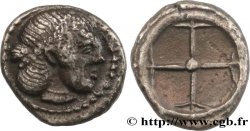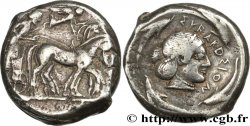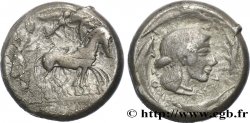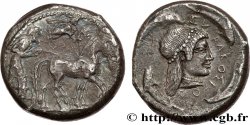bgr_379549 - SICILY - SYRACUSE Tétradrachme
Not available.
Item sold on our e-shop (2017)
Price : 2 500.00 €
Item sold on our e-shop (2017)
Price : 2 500.00 €
Type : Tétradrachme
Date: c. 485-479 AC.
Mint name / Town : Syracuse, Sicile
Metal : silver
Diameter : 24,5 mm
Orientation dies : 4 h.
Weight : 17,22 g.
Rarity : R3
Coments on the condition:
Exemplaire sur un flan bien centré des deux côtés. Joli droit avec une Niké aux ailes dépolyées. Revers d’un style très particulier. Jolie patine de collection ancienne avec des reflets dorés
Catalogue references :
Predigree :
Cet exemplaire provient du stock de Claude Burgan
Obverse
Obverse legend : ANÉPIGRAPHE.
Obverse description : Bige au pas à droite, conduit par un aurige tenant les rênes et le kentron ; le bige est couronné par Niké volant à droite.
Reverse
Reverse description : Tête d'Aréthuse à droite, les cheveux relevés et retenus par un diadème de perles, entourée de quatre dauphins.
Reverse legend : SURA-KO-S-I-O-S.
Commentary
Même coin de revers que l’exemplaire de la vente Ars Classica IV, Naville, n° 312 Ce type semble beaucoup plus rare que ne le laisse apparaître la typologie. La dernière lettre de la légende de revers est bien un sigma .







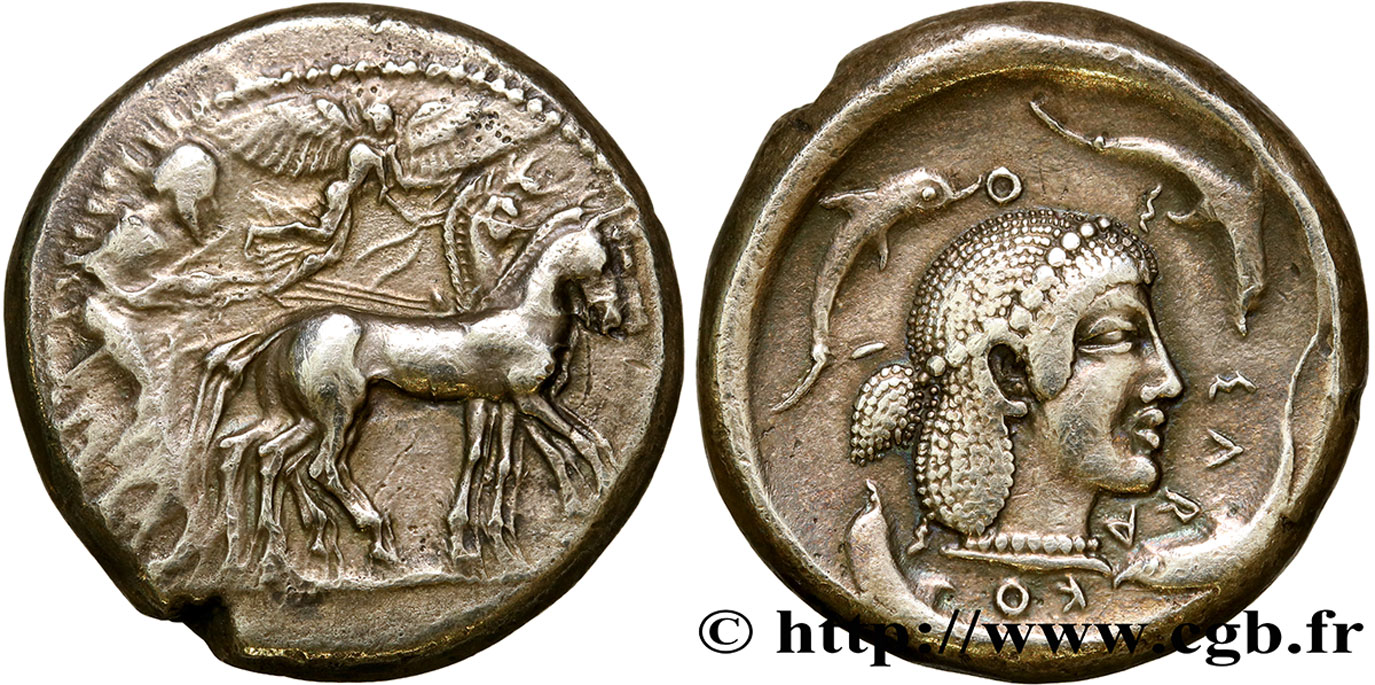
 Report a mistake
Report a mistake Print the page
Print the page Share my selection
Share my selection Ask a question
Ask a question Consign / sell
Consign / sell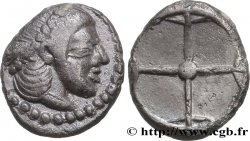
 Full data
Full data